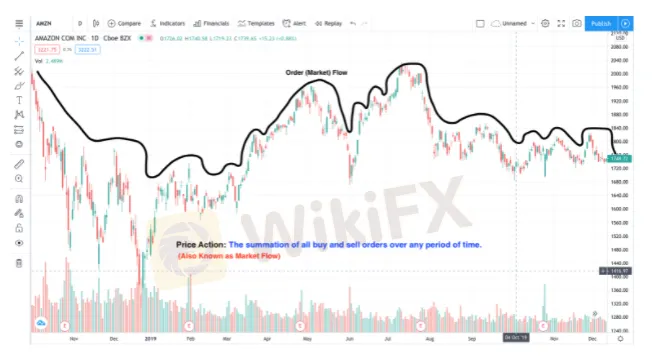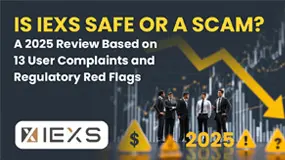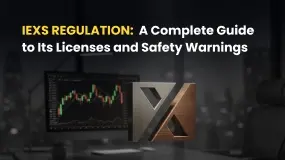简体中文
繁體中文
English
Pусский
日本語
ภาษาไทย
Tiếng Việt
Bahasa Indonesia
Español
हिन्दी
Filippiiniläinen
Français
Deutsch
Português
Türkçe
한국어
العربية
The Basics of Forex Trading
Abstract:First-time traders are often overwhelmed with trade terminology when beginning in forex.

Todays publication aims to enlighten you regarding the building blocks of forex trading . Familiarizing yourself with forex basics empowers you as an investor to make more educated market projections and, in turn, more accurate investments. Primarily, you will learn key forex terms and how those definitions help embody the formation, navigation and user engagement of the foreign exchange market.
Our core concepts today include:
Market Flow
Forex Definitions
Currency Pair Groups
Types of Forex Trades
Market Flow
The total of all buy and sell orders over any given period is known as price action. In other words, the market flow you see when looking at a stock chart image is price action. Many forex traders use technical analysis to understand real-time market flow better while gaining critical insights regarding asset support and resistance levels, high and low values, momentum, etc. By doing so, traders can better position themselves for more suitable investment opportunities.

To best monitor an asset in real-time, many forex traders use Japanese candlestick charting to gain more detailed insight into an assets market flow. The core advantages of Japanese candlesticks include:
Gain overall market sentiment (bullish or bearish).
See how your asset is economically performing.
Japanese candlestick formations reveal market insights not seen in other charting styles.

When charting with Japanese candlesticks, know that you can change the amount of time a candlestick represents (typically 1 minute, 5 minutes, 15 minutes, 1 hour, 4 hours, one day, and one week). For instance, if you set your period to 1 hour, every candlestick reflects 1 hour of market flow. More than one candlestick composes what we know as order flow, or for forex traders, that currency pairs price action. As a result, one of the three following market trends may occur:
Bullish Trend
When a currency pair is appreciating, it is known as being bullish. In bullish markets, investor confidence is high, while emerging market currencies (EME), the Australian dollar (AUD), New Zealand dollar (NZD), and the Canadian dollar (CAD) tend to appreciate. On the other hand, safe-haven currencies like the US dollar (USD), Japanese Yen (JPY), and the Swiss Franc (CHF) tend to depreciate as an investors general risk tolerance increases. Traders strategically enter bullish markets with the intent to sell once they believe the market has peaked.

Disclaimer:
The views in this article only represent the author's personal views, and do not constitute investment advice on this platform. This platform does not guarantee the accuracy, completeness and timeliness of the information in the article, and will not be liable for any loss caused by the use of or reliance on the information in the article.
Read more

Is IEXS Safe or a Scam? A 2025 Review Based on 13 User Complaints and Regulatory Red Flags
You're asking a direct and important question: Is IEXS safe or a scam? As someone who might trade with them or already does, this is the most important research you can do. While IEXS says it is a global broker with over ten years of experience, a detailed look at its regulatory status and many user reviews shows serious warning signs that cannot be ignored. The evidence suggests a high-risk situation for traders' capital. This review will examine the available information, from official regulatory warnings to concerning first-hand user complaints, to give you a clear and fact-based view of the risks involved in trading with IEXS. Our goal is to give you the facts you need to make a smart decision.

Having Trouble Getting Your Funds Out of IEXS? A Simple Guide to Delays and Solutions
Are you having trouble withdrawing funds from your IEXS account or facing delays getting your funds? Not being able to access your own capital is one of the most stressful situations any trader can face. It breaks down your basic trust with a broker. This isn't just annoying - it's a serious problem that can mess up your financial plans and cause a lot of worry. This guide goes beyond basic advice. We'll look at real user experiences and official regulatory information to give you clear answers. Our goal is to help you understand why IEXS withdrawal problems happen and show you practical steps you can take. We understand your concerns and want to give you the information you need to handle this tough situation.

FONDEX Review: Do Traders Really Face Inflated Spreads & Withdrawal Issues?
Does FONDEX charge you spreads more than advertised to cause you trading losses? Does this situation exist even when opening a forex position? Do you witness customer support issues regarding deposits and withdrawals at FONDEX broker? Does the customer support official fail to explain to you the reason behind your fund loss? In this article, we have shared FONDEX trading complaints. Read on!

IEXS Regulation: A Complete Guide to Its Licenses and Safety Warnings
When choosing a broker, every trader's biggest concern is safety and trust: is it regulated? For IEXS, the answer isn't simply YES or NO. While the company says it's regulated by trusted authorities, looking closer shows a complicated and worrying situation with mixed evidence and serious risks. What they claim on the surface doesn't match up with official warnings, license problems, and many bad user experiences. This article gives you a detailed, fact-based look into IEXS regulations, breaking down their official licenses, what their trading platform is really like, and real stories from traders who have used it. Our goal is to give you the facts so you can make a smart decision about keeping your money safe.
WikiFX Broker
Latest News
IEXS Review 2025: A Complete Expert Analysis
IEXS Regulation: A Complete Guide to Its Licenses and Safety Warnings
【WikiEXPO Global Expert Interviews】Ashish Kumar Singh: Building a Responsible and Interoperable Web3
CySEC Flags 21 Unauthorized Broker Websites in 2025 Crackdown
CQG Partners with Webull Singapore to Power the Broker’s New Futures Trading Offering
WinproFx Withdrawal Problems: A Complete Look at Delays and User Reports
Factory Orders Data Show Rebound In August
Interactive Brokers Expands Access to Taipei Exchange
Simulated Trading Competition Experience Sharing
WinproFx Regulation: A Complete Guide to Its Licensing and Safety for Traders
Currency Calculator



